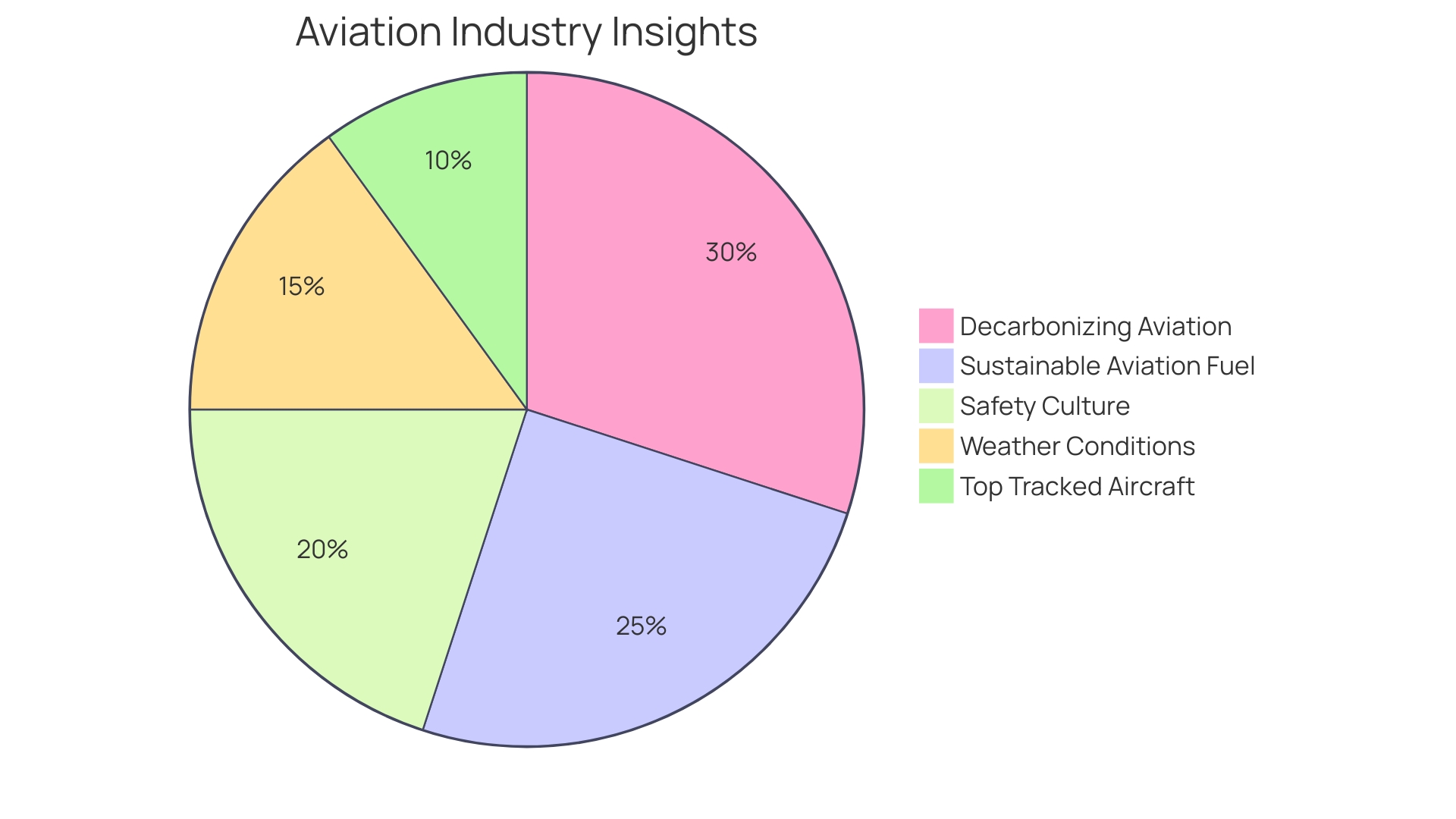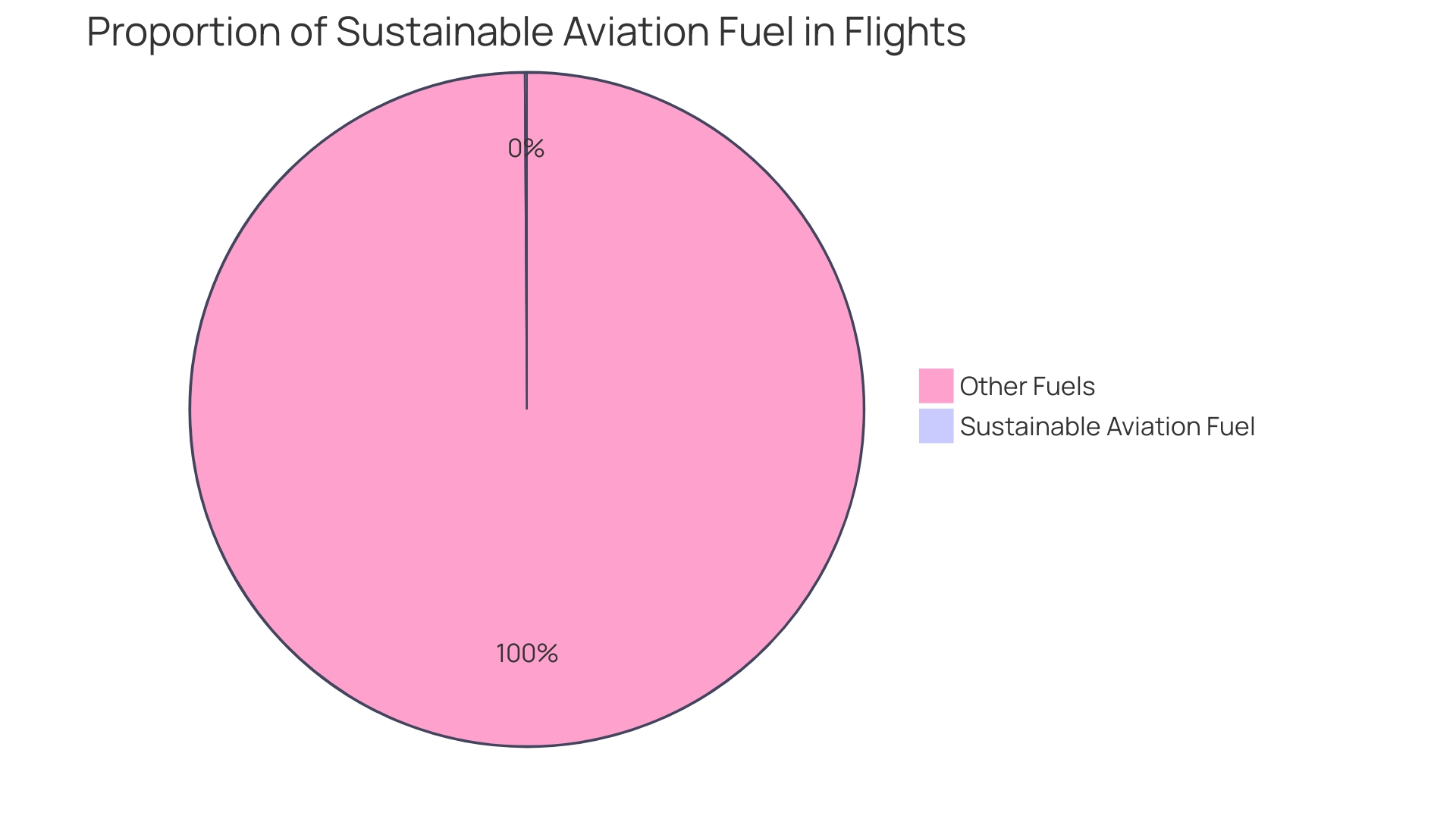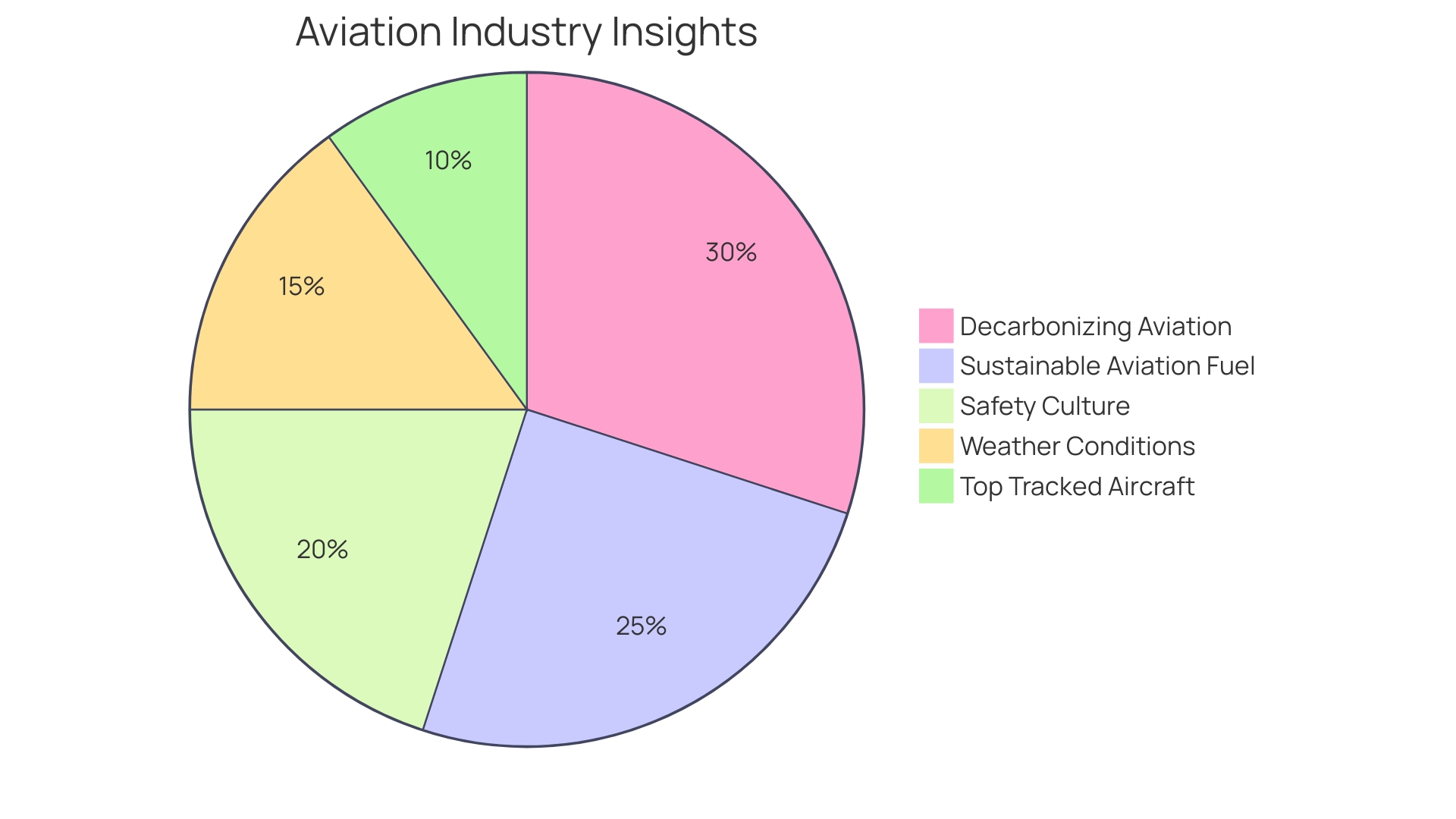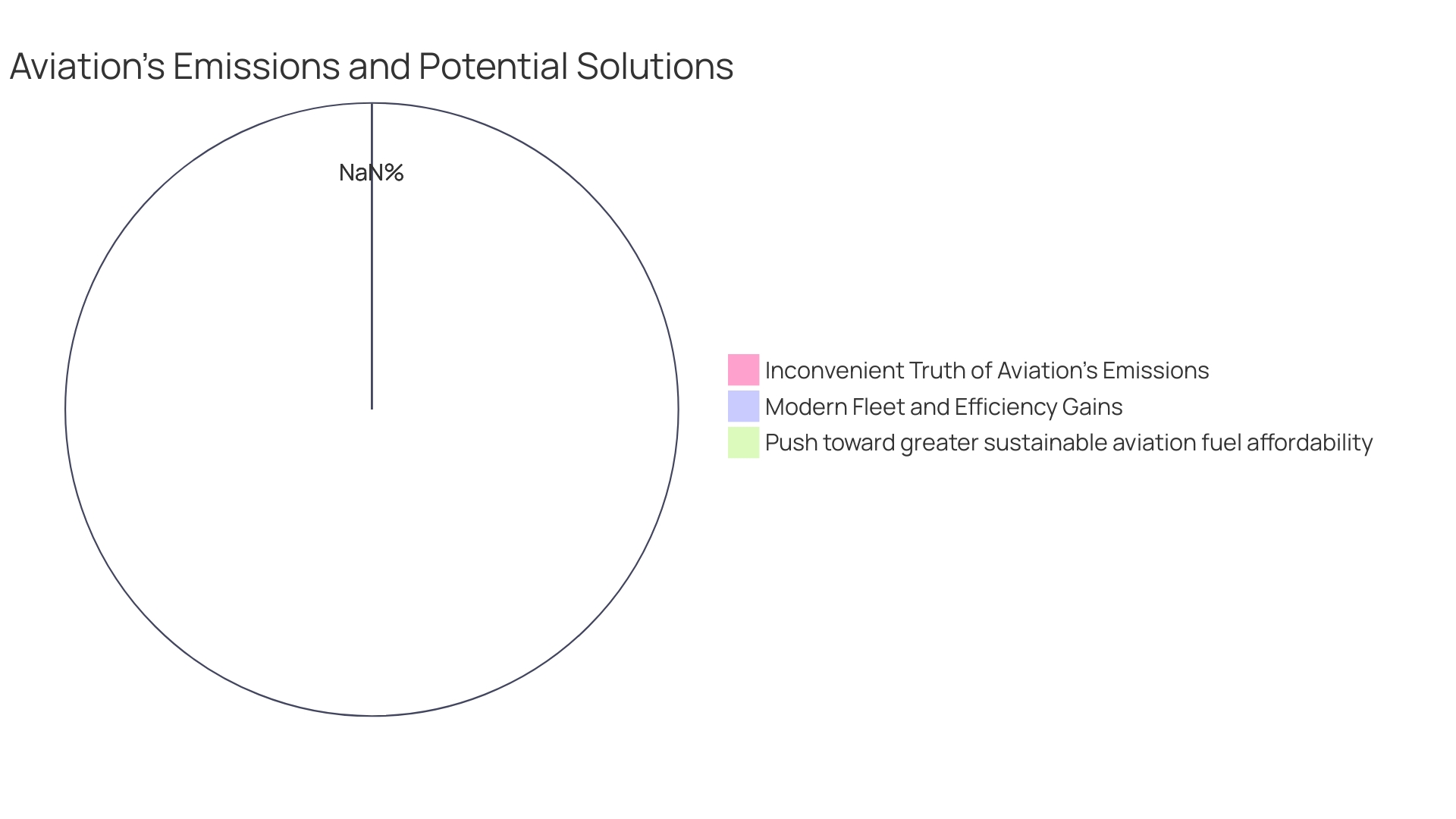Introduction
Sustainable aviation fuel (SAF) is revolutionizing the aviation industry, offering a transformative solution to reduce the environmental impact of air travel. These fuels, derived from renewable resources like biomass and waste oils, have the potential to significantly cut carbon emissions by over 80%. In a groundbreaking demonstration, a Virgin Atlantic flight completed a trans-Atlantic journey without fossil fuels, utilizing SAF made from tallow and waste fats.
This milestone signifies the industry's commitment to achieving net-zero carbon emissions and highlights the compatibility of SAF with existing aircraft engines, enabling a smoother transition to greener fuels. However, challenges such as cost and availability remain. Education and awareness are crucial to dispel misconceptions, and partnerships between companies like Airbus and Neste exemplify collaborative efforts towards decarbonizing aviation.
With commercial aviation contributing to environmental issues like air pollution and noise, the push for SAF is gaining momentum. The interplay of technology, policy, and market dynamics will shape the future of fuel production, as the industry strives for cost-effectiveness, energy efficiency, and scalability. The adoption of SAF is essential to mitigate aviation's impact on the Earth's energy balance, with CO2 and non-CO2 emissions playing a significant role.
Despite the challenges, the commitment to a greener aviation sector remains steadfast, with SAF serving as a crucial tool to minimize the environmental footprint of flying and propel us towards a more sustainable future.
Definition and Importance of Sustainable Aviation Fuels (SAF)
Sustainable aviation fuel (SAF) is emerging as a transformative solution to mitigate the environmental impact of air travel. These fuels are derived from renewable resources, including biomass, waste oils, and algae, and can significantly reduce the carbon footprint of aircraft. In a landmark event, a Virgin Atlantic Boeing 787 completed the first trans-Atlantic commercial flight without fossil fuels, utilizing SAF made primarily from tallow and waste fats. Despite representing less than 0.1% of global aviation fuel, SAF has the potential to cut carbon intensity by over 80%, aligning with the aviation industry's commitment to achieving net-zero carbon emissions.
The importance of SAF extends beyond its renewable nature; it is also compatible with existing aircraft engines. This compatibility enables a smoother transition to greener fuels without requiring a complete overhaul of current fleets. However, cost and availability pose substantial hurdles. The groundbreaking Virgin Atlantic flight, although a one-off demonstration supported by government funding, signified a significant step toward 'jet zero' ambitions. Richard Branson, aboard the historic flight, emphasized the importance of challenging the assumption that certain achievements are impossible until they are accomplished.
Understanding SAF and its role in sustainable travel is crucial, as misconceptions persist. For example, some consumers humorously note that SAF, when made from used cooking oil, could emit a French fry-like aroma. This highlights the need for ongoing education to raise awareness about the true benefits of SAF. Partnerships, like that between Airbus and Neste, exemplify collaborative efforts to decarbonize aviation, with Neste Impact offering solutions for companies to meet sustainability targets and reduce emissions credibly.
The environmental urgency is underscored by the fact that commercial aviation accounts for about 3.5% of human-induced changes to the Earth's energy balance, with CO2 and non-CO2 emissions like nitrogen oxides and contrails contributing to this impact. The ripple effects of aviation extend to air quality and noise pollution around airports, with lead emissions from older aircraft also posing health risks.
The push for SAF is gaining momentum, as evidenced by the increasing interest in sustainable travel options and the industry's proactive measures to expand the use of these fuels. Despite the challenges ahead, the commitment to a greener aviation sector remains steadfast, with SAF playing a pivotal role in minimizing the environmental footprint of flying and advancing the journey toward a more sustainable future.

Production Pathways for Sustainable Aviation Fuels
Exploring the multifaceted pathways for producing sustainable aviation fuel (SAF) reveals a promising horizon for mitigating the environmental impact of air travel. Among these, Fischer-Tropsch synthesis stands out as a process transforming a variety of feedstocks, like gasified biomass or waste gases, into long-chain hydrocarbons suitable for aviation. Its versatility allows for the use of renewable and waste-derived resources, aligning with the International Civil Aviation Organization's sustainability criteria.
Similarly, hydroprocessing—an established refinery process adapted for SAF production—targets the conversion of oils and fats into paraffinic kerosene. Its compatibility with current fuel infrastructure and potential for large-scale production makes it a compelling option for airlines seeking to reduce their carbon footprint. Notably, companies like Nestle are pioneering in this domain, offering impactful solutions for emission reduction through products like Neste Impact.
The alcohol-to-jet process also contributes to the diverse production landscape of SAF, enabling the conversion of alcohols, such as ethanol or butanol, into jet fuel. While the technical feasibility of this pathway is recognized, scaling up to meet the global demand poses a considerable challenge. As aviation endeavors to decarbonize, the sector acknowledges the need for substantial volumes of SAF, especially for long-haul flights which currently rely heavily on conventional jet fuel.
The significance of these endeavors is underscored by the stark statistics: aviation's contribution to global energy-related carbon dioxide emissions hovers around 2%, a figure that has proven challenging to decrease. With pledges from major airlines and alliances to integrate 10% SAF by 2030 and groundbreaking flights, such as the green-fuelled transatlantic journey by Virgin Atlantic, the commitment to a greener future is clear. Yet, these milestones also highlight the importance of continued innovation and infrastructure development to secure a consistent supply of SAF.
As we witness the first steps towards a more sustainable aviation industry, the interplay of technology, policy, and market dynamics will shape the future of fuel production. The pursuit of cost-effectiveness, energy efficiency, and scalability remains at the forefront of these advancements, with the collective goal of flying towards a more environmentally conscious era.
Feedstocks for SAF Production
Feedstocks are the cornerstone in the production of sustainable aviation fuel (SAF), which is critical to reduce aviation's environmental impact and contribute to the industry's ambitious carbon neutrality goals. Biomass, waste oils, and algae are among the diverse resources being considered to create SAF. Each feedstock carries its own set of benefits and challenges that must be meticulously evaluated to ensure their viability and ecological benefits.
Biomass derived from organic materials can be converted into biofuel, offering a renewable energy source. However, scalability and availability are key concerns, along with its potential competition with food crops and implications for land and water use. Waste oils, including used cooking oil, present a compelling option due to their recycling potential, reducing waste and avoiding direct competition with food sources.
Algae, as a feedstock, stands out for its high yield and ability to grow in a variety of environments, including non-arable land. It does not compete with food crops and can absorb CO2, a significant advantage in mitigating greenhouse gas emissions. However, commercial-scale production and cost-effective harvesting of algae for SAF remain challenging.
The successful integration of these feedstocks into the SAF production process could revolutionize the aviation industry. As seen with the first transatlantic flight powered by fat and sugar, there is potential for a future where aircraft operate on a diverse mix of sustainable materials. A holistic approach to SAF production, considering energy efficiency, cost-effectiveness, and scaling to meet global demand, is essential for this transition.
The current production levels of SAF are insufficient to meet the industry's needs, with less than 0.2 percent of U.S. airline fuel requirements being met by sustainable sources. The goal set by the Biden administration to produce enough SAF to cover 100 percent of the airline industry's fuel needs by 2050 emphasizes the urgency and ambition to scale up the SAF industry. As airlines like American, Delta, and United aim for net-zero carbon emissions by 2050, the importance of expanding and optimizing feedstock sourcing becomes even more pronounced to achieve a sustainable future for aviation.

Conversion Processes and Technologies
The quest for a sustainable future in aviation has led to significant advancements in the production of Sustainable Aviation Fuel (SAF). Among the innovative processes, thermal depolymerization, hydrotreating, and esterification stand out as critical technologies for converting various feedstocks into high-quality SAF. Each of these technologies has its own set of advantages, such as the capability of hydrotreating to process a wide range of feedstock, including used cooking oils—which may humorously lead consumers to note a french fry-like scent.
In pursuit of net-zero emissions by 2050, major airlines like Delta Air Lines have set ambitious goals to replace a substantial portion of conventional jet fuel with SAF. With about 90% of the industry's carbon emissions stemming from fuel, the focus on SAF is not just ideal but essential. The recent launch of the world's first ethanol-to-SAF production plant by LanzaJet in Georgia exemplifies the pioneering spirit driving this transformation. The facility's cutting-edge ethanol-to-SAF production process underscores the scalability and potential of such technologies to meet global decarbonization needs.
As the industry continues to educate consumers and build partnerships, companies like Neste are making an impact by offering solutions to reach sustainability targets effectively. The collaborative efforts between giants such as Airbus and Neste reflect the industry's commitment to environmental stewardship. Moreover, the dedication of companies like Yokogawa to optimize production through digital technologies is a testament to the sector’s drive toward innovation and autonomy.
Although SAF production is a beacon of hope for reducing aviation's carbon footprint, the environmental impacts necessitate a deeper look into the life cycle of these fuels. With commercial aviation contributing to a significant portion of the anthropogenic changes in the Earth’s energy balance, the need for SAF becomes even more pressing. CO2 emissions, along with non-CO2 factors like NOx and contrails, have been doubling since the mid-1980s. The adoption of SAF is a crucial step in mitigating these effects, ensuring a healthier planet for future generations.
The ongoing research and development in SAF production are poised to revolutionize the aviation sector, offering a tangible path to a more sustainable travel experience. As the industry evolves, so too will the technologies that enable it to soar towards a cleaner horizon.

Environmental Benefits and GHG Savings
Sustainable aviation fuel (SAF) has emerged as a pivotal element in the drive to reduce aviation's carbon footprint. A recent transatlantic flight powered solely by alternative fuels marks a milestone, demonstrating the feasibility of greener flying. Despite Saf's current usage being less than 0.1% of global aviation fuel, this event signifies a tangible step towards cleaner energy in aviation. The environmental benefits of SAF are manifold, with the potential to significantly curb greenhouse gas emissions, including carbon dioxide (CO2), nitrogen oxides (NOx), particulate matter, and other pollutants. Studies have shown that CO2 emissions from aviation have surged since the mid-1980s and could represent a considerable portion of the carbon budget to limit global warming to 1.5°C by 2050.
The long, thin clouds known as contrails, produced by aircraft in cold and humid conditions, contribute to atmospheric heat trapping. In the vicinity of airports, elevated levels of pollutants like NOx and ozone are recorded, negatively impacting both air quality and public health. Saf's role in mitigating these effects is underscored by the industry's safety culture and infrastructure, which continually seeks to enhance operational efficiency and reduce environmental impact. To foster a more sustainable aviation sector, collaboration between stakeholders in aviation, energy, and the public sector is essential, along with the adoption of supportive financial and policy measures.
While SAF is a promising solution, its higher cost compared to conventional jet fuel and limited production remain challenges. Nonetheless, industry leaders such as Alder Fuels and BP are pioneering the development of SAF technologies to produce renewable jet fuels that align with stringent industry standards. The commitment to a low-carbon future is evident, with companies actively pursuing emission reduction solutions to achieve sustainability targets and contribute to a healthier planet for future generations.
Economic Considerations and Market Dynamics
Economic considerations and market dynamics are pivotal in the adoption and commercialization of sustainable aviation fuel (SAF). Analyzing the economic landscape, one must consider the production costs, government incentives, and market demand that play crucial roles in Saf's production and deployment. The current market dynamics hinge on identifying the primary drivers and barriers for SAF's widespread acceptance.
The urgency to reduce greenhouse gas emissions in the transportation sector, particularly in aviation, has led to a surge in interest in SAF. With the United States' aviation sector being the third-largest contributor to transportation emissions and one of the fastest-growing sectors, it's clear that traditional improvements in aircraft design and electrification will not suffice in achieving timely decarbonization. This situation underscores the necessity for SAF as a viable option for mid-century decarbonization.
Efforts are being made globally to establish commercial-scale biorefineries, aiming to mitigate GHG emissions. For instance, in the US, the Department of Energy, Department of Transportation, and Department of Agriculture have set ambitious targets to escalate SAF production to 3 billion gallons per year by 2030 and potentially 35 billion gallons per year by 2050.
Simultaneously, private sector initiatives are also underway. Companies in the energy and aviation industries, such as those in Germany, are collaborating to establish potential eSAF production capacities. This strategic move not only positions Germany as a leader in the field but also promises substantial climate protection benefits and technological advancements.
Furthermore, the production and conversion of sustainable bioenergy crops into renewable fuels present an opportunity to lessen the environmental impact of aviation. However, this requires scaling up low-input, sustainable biomass feedstock crops, which is a challenge in itself.
- Commercial aviation, being centered around safety, must also address environmental challenges, such as the effects of weather on operations and the interest in tracking aircraft emissions.
- The technology to produce sustainable fuels exists, but the challenge lies in making it cost-effective and scalable to meet rising global demands.
- The environmental impacts of the aviation industry are significant, with aviation CO2 emissions potentially accounting for a quarter of the CO2 budget to limit warming to 1.5°C by 2050.
In summary, the potential for SAF cost reduction and market growth is influenced by economies of scale, technological advancements, and regulatory frameworks. These factors, combined with a concerted effort from both public and private sectors, are essential for realizing the full potential of SAF in the quest for a more sustainable and environmentally-friendly aviation industry.
Regulatory Frameworks and Sustainability Criteria
Sustainable aviation fuel (SAF) represents a significant stride towards reducing the aviation industry's carbon footprint, with the potential to cut carbon intensity by over 80%. Despite this promise, Saf's adoption faces hurdles, including limited supply, fragmented demand, and cost issues, holding its market share to less than 0.1%. The industry is also contending with non-CO2 emissions, such as nitrogen oxides and contrails, which exacerbate climate change and local air quality issues. With global air travel emissions anticipated to peak this decade, aviation's proportion of total emissions could increase as other sectors decarbonize more swiftly.
In response to these environmental concerns, regulatory bodies and industry initiatives have implemented stringent sustainability criteria and certification processes aimed at promoting SAF usage. Notably, the European Union's ReFuelEU Aviation initiative, part of the ambitious 'Fit for 55' package, mandates a reduction in net greenhouse gas emissions by 55% by 2030 from 1990 levels, with a long-term goal of climate neutrality by 2050. This regulation is set to take effect from January 2024, with key articles operational from January 2025.
Furthermore, the environmental impacts of aviation are increasingly scrutinized, with commercial flights accounting for about 3.5% of human-induced climate changes. A collaborative approach among stakeholders—including the aviation and energy sectors, and the public sector—is crucial for scaling up SAF. Reports suggest that aligning financial mechanisms and policy levers is essential to fostering a more supportive environment for SAF.
The International Air Transport Association (IATA) has resolved to achieve net-zero emissions by 2050, reflecting a significant commitment from an entity that represents 83% of total air traffic. As research progresses, the understanding of aviation's non-CO2 impacts, such as contrail cirrus formations, deepens—highlighting their considerable warming impact, potentially exceeding the effects of CO2 emissions from air travel itself. This evolving knowledge base underscores the urgency for comprehensive policy frameworks that not only address carbon emissions but also mitigate the full spectrum of aviation's environmental influences.

Case Studies: Successful Implementation of SAF
The aviation industry is on the cusp of a revolution in fuel technology, with Sustainable Aviation Fuel (SAF) playing a pivotal role in the push towards a greener future. Pioneering this transformation, Virgin Atlantic's groundbreaking Boeing 787 flight made history as it crossed the Atlantic, fueled entirely by SAF composed of tallow and waste fats. This milestone not only showcased the feasibility of large-scale, fossil fuel-free commercial flights but also highlighted the significant hurdles that remain in terms of cost and supply availability.
Despite SAF's capability to lower carbon emissions by over 80%, its usage in global aviation remains below 0.1% due to these challenges. The Virgin Atlantic flight, supported by a £1 million grant from the UK Transport Department and dubbed a 'huge step towards jet zero', demonstrates the industry's commitment to decarbonization. It underscores the importance of continued innovation and collaboration across the sector.
As we delve into the practicalities of SAF implementation, we turn to the partnership between Airbus and Neste, which symbolizes the collective effort required to overcome barriers to SAF adoption. This alliance exemplifies the strategic collaborations forming between aviation and energy leaders to achieve sustainability targets. With Neste's Impact program, companies are offered a tangible way to meet their emission reduction goals while contributing to a healthier planet.
Education remains a crucial tool in broadening the understanding and acceptance of SAF. Misconceptions persist, such as the belief that SAF is simply used cooking oil with a French fry aroma, underscoring the need for comprehensive consumer education. These educational efforts are essential for cultivating an informed public that recognizes the potential of SAF to help the industry move towards net zero emissions.
The environmental impacts of aviation are substantial, with commercial flights accounting for an estimated 3.5% of human-induced energy balance changes in the Earth's atmosphere. Non-CO2 factors such as NOx and contrails compound this effect, creating an urgency for solutions like SAF that can mitigate these impacts.
As stakeholders in the aviation and energy sectors, alongside policymakers, unite to tackle these challenges, a clearer picture emerges of the strategies, financial mechanisms, and policy levers necessary to scale SAF. The journey towards sustainable aviation is complex, yet with continued dedication and innovation, the industry is poised to make significant strides in reducing its carbon footprint, one flight at a time.
Challenges and Future Directions
The imperative to scale up sustainable aviation fuel (SAF) production is underscored by the fact that the US aviation sector is not only the third largest source of US transportation emissions but also one of the fastest-growing sectors. With emissions projected to increase due to rising demands for air travel and air freight, the pressure is on to find solutions for decarbonizing aviation, a challenge compounded by the long operational lifespan of commercial aircraft. While advancements in aircraft design and the potential electrification of aircraft are on the horizon, these alone are insufficient to achieve the necessary decarbonization by mid-century. SAF emerges as the most viable option for reducing the carbon footprint of aviation, offering compatibility with existing aircraft engines and the potential to cut carbon intensity by over 80%.
Despite the promise of SAF, the industry faces significant hurdles, including technological limitations, feedstock availability, and market barriers. The current global SAF supply represents a mere 0.1 percent of aviation fuel needs, highlighting the urgent need for increased production and innovation. Recent milestones, like the transatlantic flight powered by alternative fuels, showcase the potential of SAF, but also underline the need for a coordinated approach to overcome the challenges of scaling up.
Research and development in this field are crucial. As stakeholders from the aviation and energy sectors, along with the public sector, collaborate to create a conducive environment for SAF growth, the focus is on overcoming the technological and economic barriers. For instance, initiatives like the agreement signed at the National Aviation Conference to establish eSAF production capacities in Germany reflect a commitment to innovation and collaboration.
Understanding both the environmental impact of conventional aviation fuels and the potential of SAF is imperative. CO2 emissions from aviation have doubled since the mid-1980s, and non-CO2 factors like nitrogen oxides and contrails also contribute significantly to atmospheric warming. Addressing these impacts requires not just a shift to SAF but also a concerted effort to mitigate the non-CO2 effects of aviation, which are only now being fully understood.
In conclusion, the transition to SAF is not just about adopting new fuels but also about rethinking the entire lifecycle of aviation fuel. From production to consumption, each step presents opportunities for improvement and innovation, making it an exciting yet challenging time for the industry as it moves towards a more sustainable future.
Conclusion
The adoption of sustainable aviation fuel (SAF) is revolutionizing the aviation industry, offering a transformative solution to reduce the environmental impact of air travel. SAF, derived from renewable resources like biomass and waste oils, has the potential to significantly cut carbon emissions by over 80%. The recent Virgin Atlantic flight powered by SAF made from tallow and waste fats demonstrated the industry's commitment to achieving net-zero carbon emissions and highlighted the compatibility of SAF with existing aircraft engines.
However, challenges such as cost and availability remain.
Education and awareness are crucial to dispel misconceptions surrounding SAF. Partnerships between companies like Airbus and Neste exemplify collaborative efforts towards decarbonizing aviation. Despite the challenges, the commitment to a greener aviation sector remains steadfast, with SAF serving as a crucial tool to minimize the environmental footprint of flying and propel us towards a more sustainable future.
The multifaceted pathways for producing SAF, such as Fischer-Tropsch synthesis and hydroprocessing, offer promising opportunities for decarbonization. Feedstocks like biomass, waste oils, and algae are being explored, each with its own benefits and challenges. The successful integration of these feedstocks into SAF production could revolutionize the aviation industry, leading to a future where aircraft operate on a diverse mix of sustainable materials.
Technologies like thermal depolymerization, hydrotreating, and esterification are critical for converting feedstocks into high-quality SAF. Collaboration between stakeholders in the aviation and energy sectors, along with supportive financial and policy measures, is necessary for scaling up SAF production. The environmental benefits of SAF are significant, with the potential to curb greenhouse gas emissions and mitigate the impacts of contrails, nitrogen oxides, and other pollutants on air quality and public health.
Economic considerations and market dynamics play a pivotal role in the adoption and commercialization of SAF. Regulatory frameworks and sustainability criteria are being implemented to promote SAF usage. Successful case studies, such as the Virgin Atlantic flight and the partnership between Airbus and Neste, highlight the industry's dedication to decarbonization.
The imperative to scale up SAF production is underscored by the projected increase in aviation emissions. SAF emerges as the most viable option for decarbonizing aviation, but technological limitations, feedstock availability, and market barriers pose challenges. Research and development, along with a concerted effort to mitigate non-CO2 effects, are crucial for a successful transition to SAF and a more sustainable future for the aviation industry.




